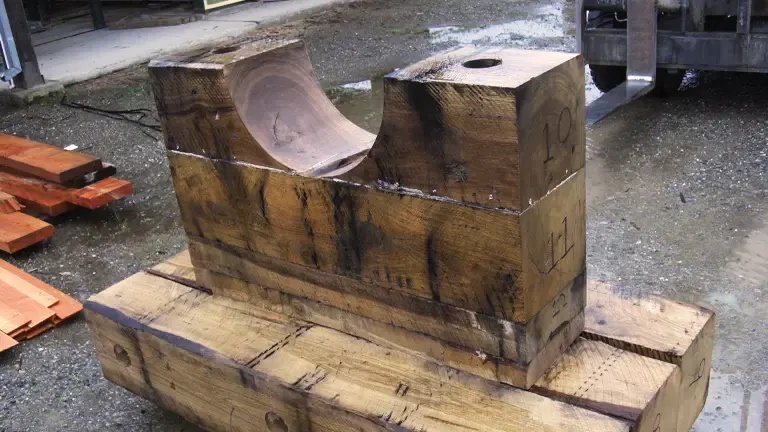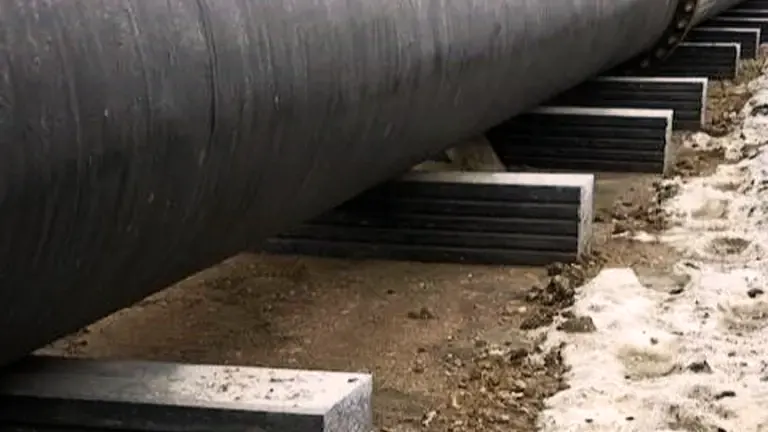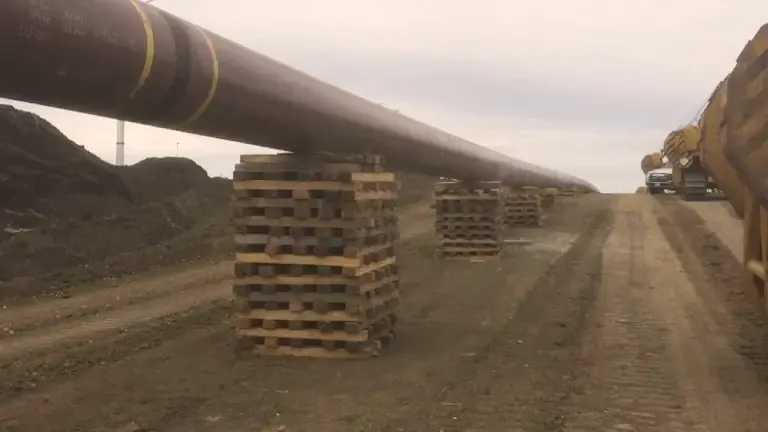Understanding Pipeline Skids
- May 30, 2023
- 0 comments
- Tyler Moss
What is a Pipeline Skid?
A pipeline skid, in simple terms, is a foundational structure designed to support, secure, and elevate pipelines, especially in the oil and gas industry. These robust structures are invaluable for ensuring the stability and safety of pipelines in diverse environments, from desert sands to icy terrains.

Different Types of Pipeline Skids
Skids come in a variety of materials, each having its unique set of advantages. Let's dive into the most common types:
Steel Pipeline Skids

Steel skids are highly regarded for their exceptional strength and resistance to corrosion. Made from high-quality, industrial-grade steel, these skids offer remarkable durability, making them perfect for heavy-duty use in harsh conditions. Their resistance to weather-related damage and rust is unmatched, making them a reliable choice for long-term pipeline installations. However, steel skids are more expensive than other types and their production has a significant environmental footprint.
Timber Pipeline Skids

Timber pipeline skids, typically made from hardwood species such as oak, are popular due to their affordability and environmental friendliness. Despite their lower cost, they offer impressive durability and can effectively support large pipeline structures. Timber skids are relatively light, making them easy to transport and install, and are particularly suitable for temporary installations or in locations where heavy machinery access is limited. A significant advantage of timber skids is their environmental impact; they're a renewable resource, and after their useful life, they can be easily recycled or repurposed.
Composite Pipeline Skids

Composite pipeline skids are a modern innovation in the pipeline industry. These skids are made by combining different materials, often fiberglass and resin, which offer high strength and light weight. They're designed to leverage the advantages of both steel and timber skids. Composite skids are resistant to corrosion, making them suitable for use in harsh or marine environments. Like timber skids, they're relatively light, simplifying transport and installation. Moreover, they offer a longer lifespan compared to timber skids, thanks to their resistance to rot and decay. In terms of environmental impact, composite skids are generally more eco-friendly than steel but less so than timber.
The Role of Pipeline Skids in the Oil and Gas Industry
Improving Efficiency and Safety
Pipeline skids play a vital role in maintaining the integrity of the pipelines. They prevent the pipes from sagging or bending, reducing the risk of leaks or ruptures.
Facilitating Easy Transportation
Skids also make it easier to transport and install pipelines. They're designed to be lifted and moved with ease, simplifying logistics.
How to Choose the Right Pipeline Skid
Considering the Material
Choosing the right material for your skid is crucial. Steel is strong and durable, but if environmental impact is a concern, you might opt for timber or composite skids.
Analyzing the Size and Design
The size and design of the skid should match your pipeline specifications. It's crucial to get the dimensions right to ensure the safety and stability of your pipes.
Assessing the Durability
Durability is key. Skids must be able to withstand the rigors of their environment without failing.
Maintenance Tips for Pipeline Skids
Regular Inspection
Routine inspections are crucial for ensuring the longevity of your pipeline skids. Catching potential issues early can prevent major problems down the line.
Prompt Repairs
If you spot damage during your inspection, don't wait. Prompt repairs can prevent further deterioration and potential pipeline damage.
Hiring Professionals
Sometimes, it's best to leave the work to professionals. They have the expertise to ensure your skids are well-maintained and functioning optimally.
Environmental Impact of Pipeline Skids
While pipeline skids are necessary, they do have an environmental footprint. Therefore, using sustainable materials like timber or composite can help reduce this impact.
The Future of Pipeline Skids
As technology advances, we can expect to see improvements in pipeline skid design and materials. Innovations are likely to focus on increasing durability, reducing environmental impact, and enhancing operational efficiency.
Conclusion
Pipeline skids, with their pivotal role in the oil and gas industry, ensure safety, boost efficiency, and facilitate transportation. As we move towards a more sustainable future, the focus will likely shift towards greener materials and designs.
FAQs
- What is a pipeline skid? A pipeline skid is a structure used to support and secure pipelines.
- Why are pipeline skids important in the oil and gas industry? They maintain the integrity of pipelines, improve safety, enhance efficiency, and facilitate transportation.
- What are the different types of pipeline skids? Pipeline skids can be made from different materials, primarily steel, timber, and composite.
- How do I choose the right pipeline skid? Consider factors like the material, size, design, and durability when choosing a pipeline skid.
- What is the environmental impact of pipeline skids? While necessary, pipeline skids do have an environmental footprint. Using sustainable materials can help reduce this impact.
Get Access Now:



Leave your comment